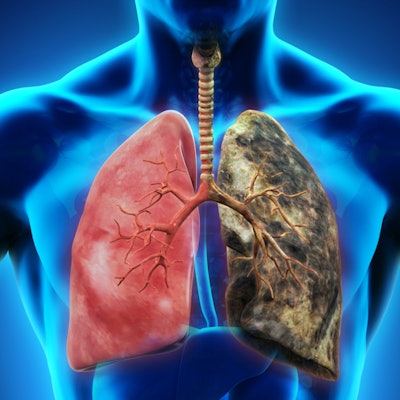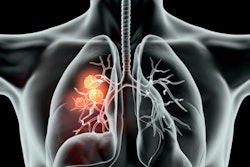
F-18 FDG PET/CT shows promise for detecting recurrence of disease in non-small cell lung cancer (NSCLC) patients after they've undergone surgery, according to a study published September 9 in General Thoracic and Cardiovascular Surgery.
The research results point to molecular imaging as an effective way to track NSCLC patients after treatment, wrote a team led by Dr. Hiroaki Toba of the University of Tokushima in Japan.
"FDG-PET/CT has a high capability to detect recurrence in NSCLC patients after a potentially curative operation," the group noted. "It might be sufficient to perform follow-up FDG-PET/CT until three years after the operation, especially for advanced-stage patients."
There's no consensus regarding how best to follow up NSCLC patients after they've had curative resection for the disease, although follow-up with CT at six to 12-month intervals for two years after surgery is recommended by professional organizations such as the American College of Chest Physicians, the European Society for Medical Oncology, and the U.S. National Comprehensive Cancer Network, the authors wrote.
But relatively recent research has suggested that F-18 FDG PET/CT's diagnostic capability is "high in postoperative NSCLC patients without clinical and radiological evidence of recurrence," according to the team.
To further explore F-18 FDG PET/CT's performance in detecting NSCLC recurrence, Toba and colleagues conducted a study that included 172 patients who underwent F-18 FDG PET/CT between 2005 and 2013 as postsurgical follow-up. All patients had another exam at least a year later.
PET/CT correctly diagnosed disease recurrence in 46 of 47 patients (97.9%) and 68 of 69 recurrence sites (98.6%). The group found the following:
| F-18 FDG PET/CT for detecting NSCLC recurrence | |
| Measure | Percentage |
| Accuracy | 97.3% |
| Negative predictive value | 99.3% |
| Positive predictive value | 92% |
| Sensitivity | 97.9% |
| Specificity | 97.1% |
PET/CT's detection rate of recurrence was higher in patients with more advanced disease (stage III, compared with stages I or II). Follow-up PET/CT exams also found additional disease in six patients.
The researchers acknowledged that the study did not explore whether F-18 FDG PET/CT is cost-effective for this indication.
"To maximize its effectiveness, we suspect that FDG-PET/CT should be performed for a more limited population of patients," the group wrote.
More research on F-18 FDG PET/CT's cost-effectiveness in NSCLC patients is needed, but the modality shows promise for tracking patients after they've been treated with surgery, according to the group.
"A large-scale multi-institutional randomized control trial is necessary to ascertain the benefits and disadvantages of surveillance with FDG-PET/CT, including its cost-effectiveness and the patients' survival benefit," Toba and colleagues concluded.



















